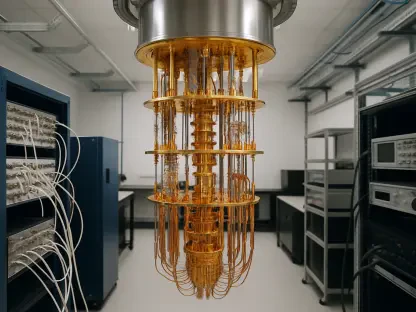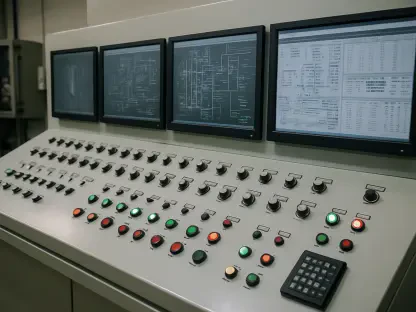Hewlett Packard Enterprise (HPE), a leading global technology company, has announced a significant workforce reduction, with plans to lay off 2,500 employees, or 5% of its staff. This move marks a crucial chapter in HPE’s strategic pivot toward artificial intelligence (AI) and cloud computing. As a part of this initiative, HPE aims to save $350 million by fiscal 2027, reshaping its operations to better align with current technological advancements and market demands.
Factors Driving the Layoffs
Declining Profit Margins and Increased Competition
HPE’s decision to cut jobs has been influenced by declining profit margins and fierce competition from industry giants like Dell Technologies and Super Micro Computer. These rivals have been making significant strides in the market, leading to pressure on HPE to rethink its business strategies. The competitive landscape is further complicated by rising tariffs on imports from Mexico, Canada, and China, which have added to the overall costs of manufacturing and operations.
As global supply chain disruptions continue to hamper production and distribution, HPE has found maintaining profitability increasingly difficult. This financial strain has underscored the urgency for HPE to pivot from its legacy enterprise hardware to more profitable, next-generation technologies. In this context, the emphasis on AI and high-performance computing comes not just as a strategic choice but as a necessary pivot to ensure sustainable growth and competitiveness.
Rising Manufacturing Costs and Supply Chain Issues
The persistent challenge of rising manufacturing costs coupled with global supply chain disruptions has significantly impacted HPE’s profitability. Manufacturing costs have surged, partly due to increased tariffs and logistical complications. These disruptions have affected the timely delivery of components and increased expenses related to alternative sourcing strategies. Consequently, the financial pressure has driven HPE to adopt aggressive restructuring measures to reallocate resources more effectively.
The company’s focus is now shifting towards AI-powered data centers and cloud computing, which promise higher returns and reduced dependency on traditional hardware solutions. By investing in these areas, HPE aims to enhance operational efficiencies and reduce overheads associated with its conventional hardware manufacturing. This shift not only reflects broader industry trends but also HPE’s commitment to staying ahead in a highly competitive and rapidly evolving tech landscape.
Strategic Shift to AI and Cloud
Reallocating Resources and Industry Trends
HPE is undergoing a strategic reallocation of resources from its traditional enterprise hardware business to cutting-edge technologies, putting greater emphasis on AI and cloud computing. This shift is indicative of a larger trend within the tech industry, where AI and automation are increasingly prioritized over traditional hardware solutions. By redirecting investments into high-performance computing and AI-driven infrastructure, HPE aims to position itself at the forefront of technological innovation.
The company’s $14 billion acquisition of Juniper Networks is a testament to this strategic direction, aimed at expanding its presence in cloud networking and AI-driven solutions. However, the deal is currently facing regulatory scrutiny, which adds a layer of financial uncertainty to HPE’s future operations. Despite these challenges, HPE’s commitment to transforming its business model underscores its resolve to adapt to the changing market landscape and leverage the growing demand for AI and cloud expertise.
Cost-Cutting and Workforce Realignments
As part of its transition to AI and cloud-centric operations, HPE has embarked on several cost-cutting measures. This includes automating various operations, consolidating business units, and reducing overhead related to its traditional enterprise hardware departments. For instance, despite reporting $7.9 billion in revenue in Q1 2025 and net earnings of $598 million, HPE’s shrinking profit margins necessitated aggressive steps to streamline operations and reduce costs.
The workforce reductions, while unfortunate, are a direct outcome of these efforts to enhance profitability. By eliminating redundant roles and focusing on high-value, next-generation technologies, HPE is aligning its human resources with its strategic objectives. This move signals a broader trend of transformation within the tech industry, highlighting the growing importance of skills in AI, cloud, and cybersecurity. As HPE continues to navigate these changes, the company’s long-term focus on AI and cloud presents new opportunities for growth and innovation.
Future Prospects and Market Outlook
Impact on Employees and Talent Reshuffling
The layoff of 2,500 employees underscores the ongoing challenge of balancing human resources in response to shifting technological demands. While the job cuts are a significant blow to those affected, they represent a broader realignment of talent towards areas that offer greater future potential. HPE’s strategic focus on AI and cloud computing demands a different skill set compared to its legacy hardware business. As a result, the company is likely to seek professionals with expertise in these emerging fields to drive its continued innovation and competitiveness.
For the employees being laid off, this transition may offer opportunities to reskill and explore new roles within the growing sectors of AI and cloud technologies. Industry-wide, this reshuffling of talent is a reflection of the broader shift towards modernization and automation, which is shaping the future workforce dynamics in the tech industry. Moreover, HPE’s strategic initiatives may pave the way for future hiring in specialized areas, contributing to the overall growth and evolution of the tech talent landscape.
Investor Perspective and Market Challenges
Hewlett Packard Enterprise (HPE), a leading global technology firm, has revealed plans for a substantial workforce reduction, intending to lay off 2,500 employees, which constitutes 5% of its total staff. This critical move is part of HPE’s strategic transition towards enhancing its focus on artificial intelligence (AI) and cloud computing. By executing these layoffs, the company aims to cut $350 million in costs by the fiscal year 2027. This restructuring effort is designed to recalibrate HPE’s operations to better align with current technological advancements and shifting market needs. The shift underscores HPE’s commitment to prioritizing areas perceived as growth drivers in the tech industry, enabling it to remain competitive and innovative. This move also signifies HPE’s dedication to staying ahead in the tech industry by investing in advanced technologies that promise better returns and market relevance.









